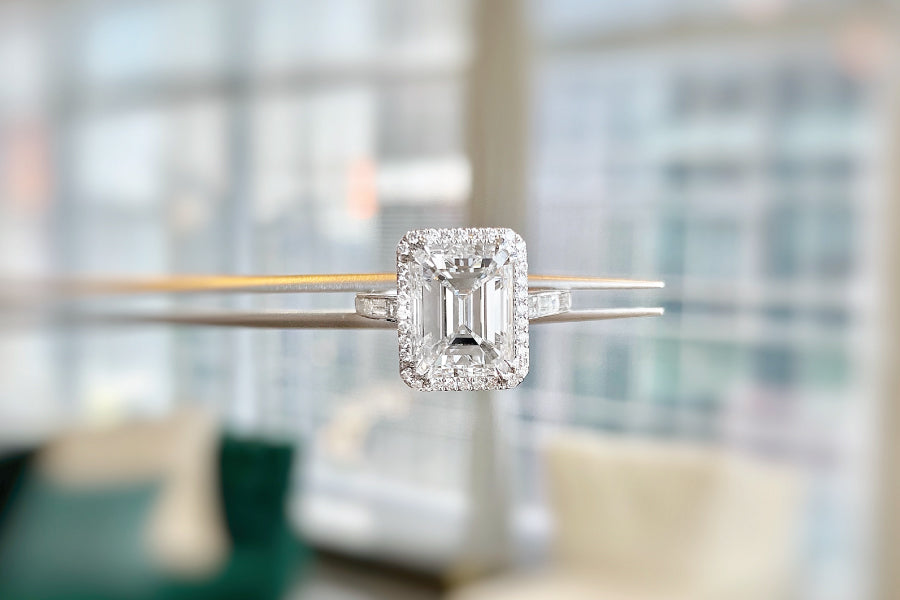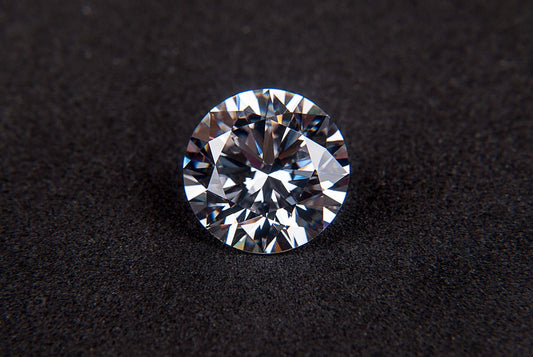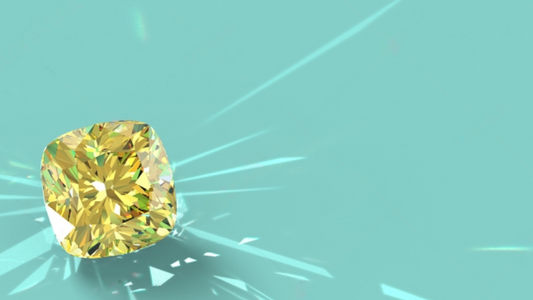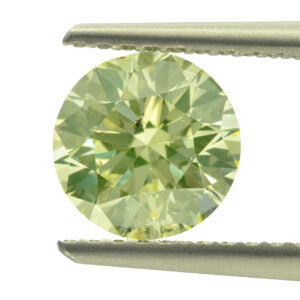What is Diamond Clarity?
Diamond clarity is a term used to describe the degree of imperfections in a diamond. The higher the clarity, the fewer blemishes or inclusions the diamond has. Diamonds with a clarity of SI1 or above are considered to be nearly flawless and are among the most expensive diamonds on the market. Diamonds with clarity of I or II are also very rare but may have some minor blemishes. Finally, clarity grades below I are virtually impossible to find and generally only found in lower-quality diamonds.
What are Diamond Inclusions?
A diamond's most defining attribute is the diamond inclusions, which are small bits of other minerals that were trapped inside the diamond crystal lattice while it was growing, and these inclusions vary widely in colour, size, shape, and inclusion type. They can be found both in diamonds that are clear or coloured, and they can add value to a diamond as they can enhance its symmetry and reflect different colours depending on its location within the diamond crystal structure.
What does VS1 Mean?
The VS1 diamond grading scale is one of the most widely used and recognised diamond grading scales in the world and was developed by the Gemological Institute of America (GIA) in 1952 and is currently administered by the American Gem Society (AGS). The VS1 scale ranges from 0 to 10, with 10 being the highest grade.
The diamond scale was created as a way to compare diamonds of equal quality. It uses two main factors to determine a diamond's clarity grade: brightness and symmetry. A diamond with a VS1 clarity grade has no inclusions or blemishes that can be seen with the naked eye. Diamonds with a VS1 clarity grade are usually very bright and have perfect symmetry.
What is a VS1 Diamond?
A VS1 diamond, also known as a 'clarity grade' diamond, is one of the highest quality diamonds that can be found. VS1 diamonds are only found in the most exclusive of auctions and typically command a higher price than other grades. They are typically smaller in size than other diamonds and have fewer blemishes or inclusions.
What are the uses of VS1 diamonds? VS1 diamonds are used for a variety of purposes, such as engagement rings and wedding bands. They are also used in earrings, necklaces, and other jewellery items.
Characteristics of VS1 Diamond
Shape of VS1 Diamond
VS1 diamonds are round and have a diameter of 0.24 inches. They are considered "ideal" because their 94% fire rating makes them resistant to scratches and other damage caused by heat.
Size of VS1 Diamond
When it comes to diamonds, size is often a major factor in determining the price. The VS1 diamond is one of the smallest diamonds available on the market, and its small size makes it a popular choice for women who want something delicate and sparkly. However, despite its petite frame, the VS1 diamond packs a punch when it comes to value. On average, VS1 diamonds sell for more than double the price of a standard diamond.
The VS1 Diamond is the smallest diamond that has been graded by the Gemological Institute of America GIA. It measures 0.40 carats and has a grade of Excellent.
Cut of VS1 Diamond
VS1 diamonds are the most premium and expensive type of diamond. They have a very small cut, which means the diamond has been cut so that only 1/5th of its total weight is diamond. This small amount of diamond gives the VS1 diamond its unique properties, including its extraordinary fire and brightness.
Price of VS1 Diamond
When it comes to the price of a VS1 Diamond, it is important to keep in mind that there can be a lot of variables involved. Factors such as the quality and carat weight of the diamond, as well as its location and history, can all impact its price. However, on average, a VS1 Diamond will cost between $2,000 and $5,000.
Advantages of VS1 Diamond
The VS1 diamond is the highest quality diamond certification offered by the Gemological Institute of America (GIA). VS1 diamonds have some of the most impressive advantages when compared to other diamond certifications. These diamonds are less likely to show inclusions or blemishes, making them a great choice for those looking for flawless diamonds. Additionally, VS1 diamonds boast a higher fire rating than other diamond certifications, meaning they can withstand more heat and wear without succumbing. Finally, VS1 diamonds are also less expensive than other types of diamonds.
Disadvantages of VS1 Diamond
There are several disadvantages to using a VS1 diamond. Firstly, they are much less common than other diamond grades, meaning that you will likely pay more for one. Secondly, they can be harder to cut and polish, making them less desirable for use in jewellery. Finally, they tend to have poorer colour and clarity than other diamond grades.
Where Can You Buy VS1 Diamonds
When it comes to diamonds, quality is always a top priority, which is why you should consider buying VS1 diamonds - the highest quality diamond grade available. VS1 diamonds are found in some of the world's most prestigious jewellery stores.
If you're looking to buy a diamond online, there are several reputable sites that offer VS1 diamonds at discounted prices, and an example of this is the website of GIA. Overall, it's important to do your research when selecting a diamond store - just make sure you're getting the best quality diamond possible!
Conclusion
There is no question as to the importance of VS1 diamonds. These diamonds are the highest quality and most rare diamond grades, and they are typically reserved for luxury items such as engagement rings and wedding bands.
VS1 diamonds are incredibly rare and valuable, which means that they typically command a higher price than other diamond grades. For example, a 1-carat VS1 diamond can fetch upwards of $200,000. Additionally, because VS1 diamonds are so rare, they tend to be more durable than other diamond types. This means that they can last longer without any noticeable wear or tear.
If you're looking for the best possible Diamond grade for your luxury jewellery purchase, don't forget about VS1 diamonds!
FAQS
How can you tell that a diamond is real?
When it comes to diamonds, you want to make sure that you are getting a real diamond. There are a few ways that you can tell if a diamond is real. The first way is to look at the quality of the diamond. A high-quality diamond will have a higher colour and clarity than a lower-quality diamond. It will also be much more sparkly and have a better fire. The second way to tell if a diamond is real is to look at the certificate of authenticity. A real diamond should have an inscription from the Gemological Institute of America (GIA) or another reputable authentication organisation. Finally, if you are buying a large number of diamonds, it's important to check with your jeweller to make sure they are all real diamonds.
How do you hide diamond inclusions?
Diamond inclusions are small but noticeable blemishes on a diamond. They can affect the diamond's clarity and colour and may even make the diamond unsalable. To hide diamond inclusions, you first need to know what kind of inclusions are present.
There are three main types of diamond inclusions: crystal growth inclusions, water inclusion defects, and carbon inclusion. Crystal growth inclusions are tiny crystals that were trapped during the formation of the diamond. Water inclusion defects are tiny pockets of water inside the diamond. Carbon inclusion is made up of carbon atoms that were added during the manufacturing process.
Each type of inclusion has a different way of being hidden. For crystal growth inclusions, you need to have a very high level of clarity on your diamond. This means that any crystal growth inclusions will be visible with magnification.
Do inclusions devalue a diamond?
Many people believe that inclusions within diamonds devalue them. Diamonds without inclusions can be worth up to 10 times more than diamonds with small inclusions. However, this is not always the case. A diamond with a small inclusion may still be worth more than a diamond without an inclusion, depending on the quality of the diamond and the market conditions.









